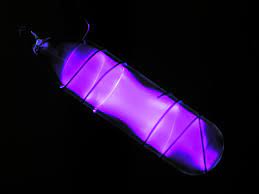Argon
Argon is a chemical element in the eighteen group of the periodic table. It is a noble gas, and it is the third most abundant gas in earth's atmosphere. Argon is the most common gas in the atmosphere besides Nitrogen and Oxygen. Argon is a noble gas (like helium) which means that it is completely inert.
Argon is often used when an inert atmosphere is needed. It is used in this way for the production of titanium and other reactive elements. It is also used by welders to protect the weld area and in incandescent light bulbs to stop oxygen from corroding the filament.

